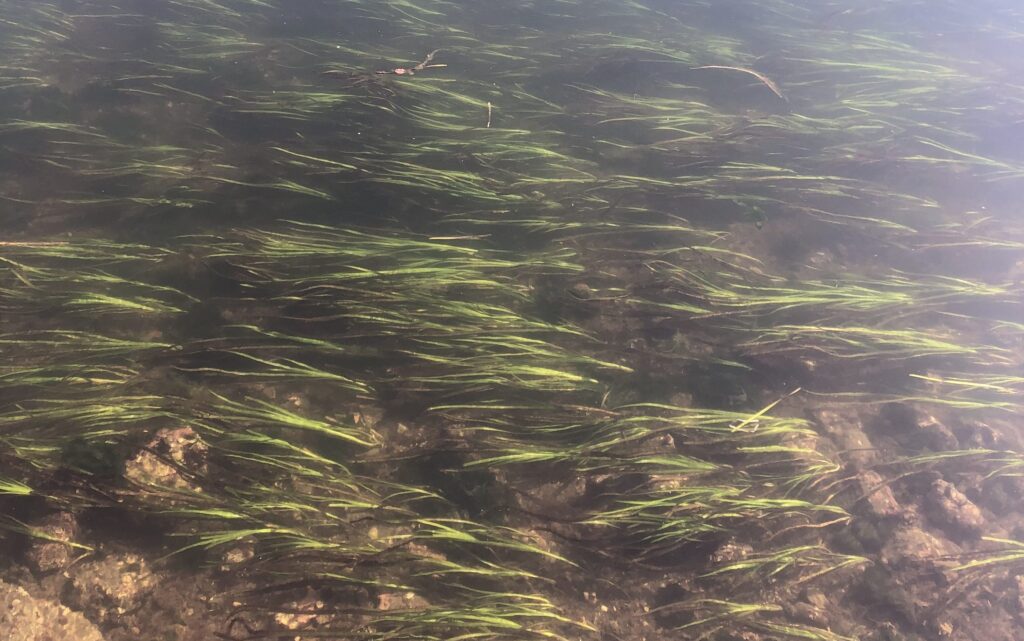Eelgrass (Zostera marina)

Eelgrass is a perennial plant which grows in shallow saltwater areas, such as estuaries. Eelgrass has long, flat leaves, and is anchored to the seafloor through rhizomes underneath the sediments. Eelgrass can spread through its rhizomes as well as seeds, and it forms dense meadows which provide habitat for many aquatic species.
Eelgrass is a keystone species, which means that it is essential for the function of the ecosystem that it is a part of. Microorganisms such as algae and bacteria grow on the surface of the eelgrass leaves, which provides food for many marine organisms. This forms the base of a diverse community which depends on the eelgrass meadow for food and shelter. Eelgrass meadows act as a nursery area for juveniles of many fish species, due to the abundance of food and the shelter provided by the plants. Eelgrass also helps to reduce erosion; the rhizomes also help to anchor sediment, and the plants dampen the impact of waves on the shore.
Eelgrass is an extremely important plant for humans as well. Many fish which are important to fisheries use eelgrass meadows as a nursery area. Also, eelgrass meadows are highly productive ecosystems and are able to remove much more carbon from the atmosphere than a terrestrial forest with the same area. Restoring eelgrass meadows could be an important step towards reducing the effects of climate change. However, eelgrass is very sensitive to water pollutants, and can only grow in a small range of habitats. This makes it very important to protect the areas where eelgrass is able to grow, like the Gorge Waterway.
For more information on eelgrass, visit E-Flora BC or the Aquarium of the Pacific website. To learn about the ecological importance of Eelgrass, check out this article by NOAA fisheries.


